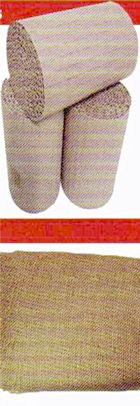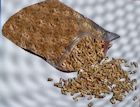I have been beekeeping for 40 years below is some basic equipment and knowledge to get started
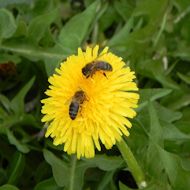 |
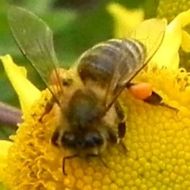 |
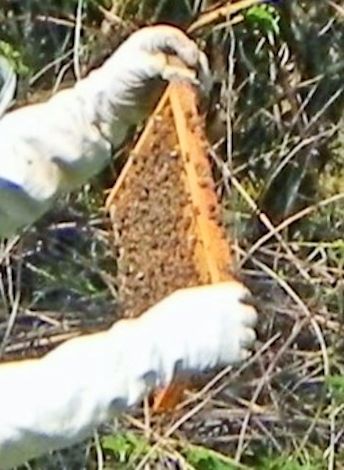 |
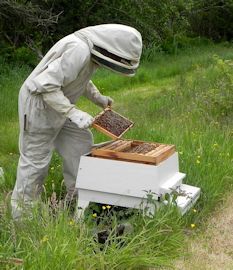 |
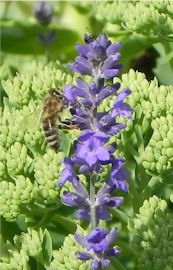 |
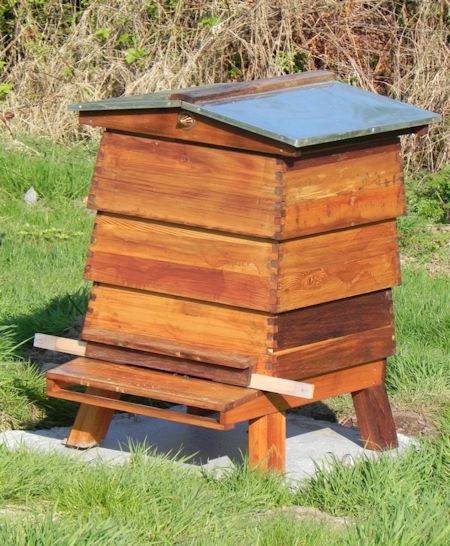
W B C Hiveinvented by W B Carr. The differences between this hive and the National Hive is it has a double wall with a air gap between outer and inner walls This help to protect against the elements. |
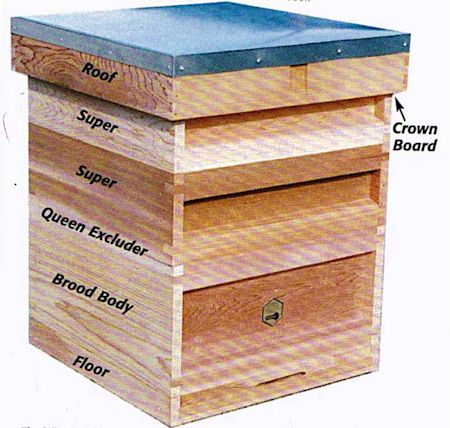
National Hive |
Hives can be purchased in
|
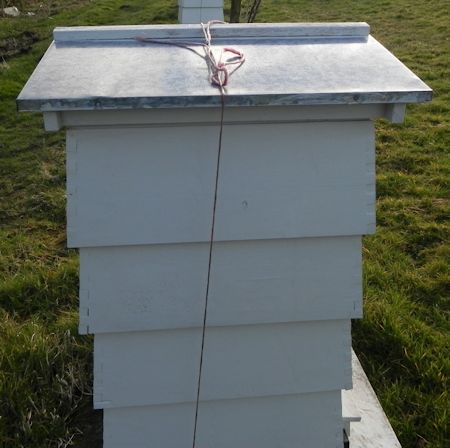 We have put concrete bases down with hooks in bedded in to strap the hives down in bad weather We have put concrete bases down with hooks in bedded in to strap the hives down in bad weather |
|||
|
||||
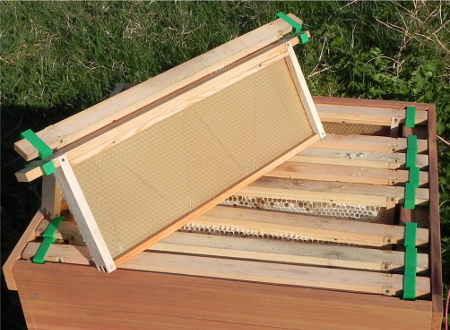
A new foundation superthese can be purchased as a DIY kit or complete . This can be purchased with or without wire . If cut comb is required use unwired foundation |
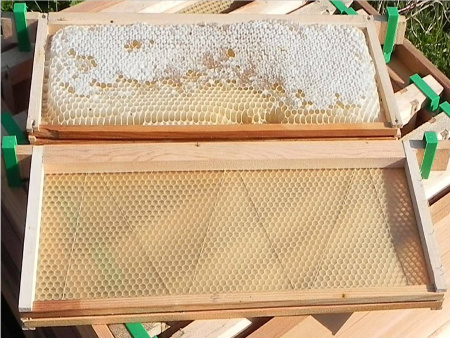
A new super at the bottomAt the top is a super that has been capped ready to |
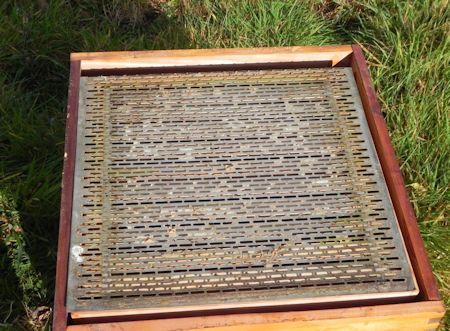 |
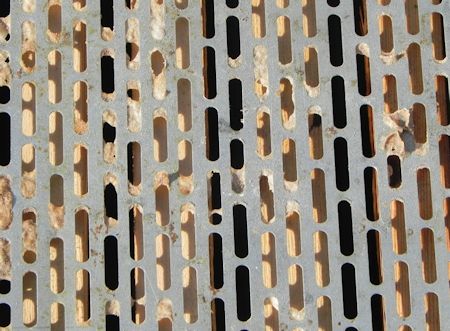 |
| The Queen excluder is paced above the brood section. This allows the workers to go through the super but stops the Queen bee entering the super. | |
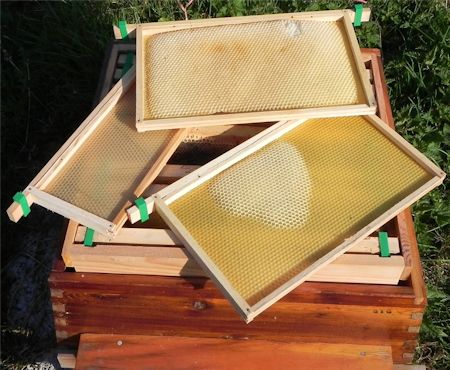 |
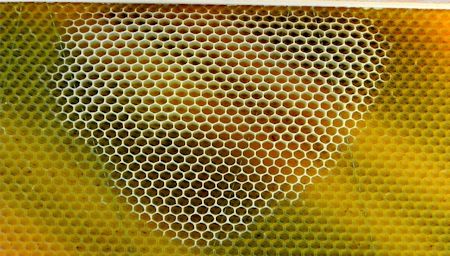 The Brood section is deeper than the super. This is where the queen lays her eggs. The Brood section is deeper than the super. This is where the queen lays her eggs. |
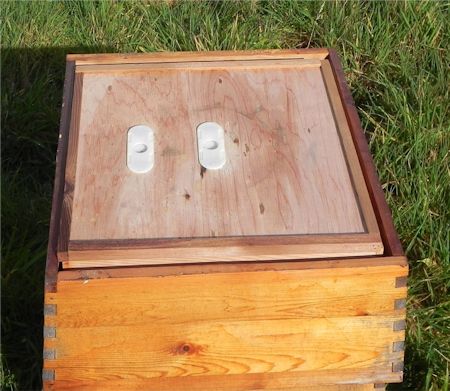 The cover board is placed on top of the super to stop the bees gluing the roof to the super and frames, leaving esier access to the hive. The cover board is placed on top of the super to stop the bees gluing the roof to the super and frames, leaving esier access to the hive. |
|
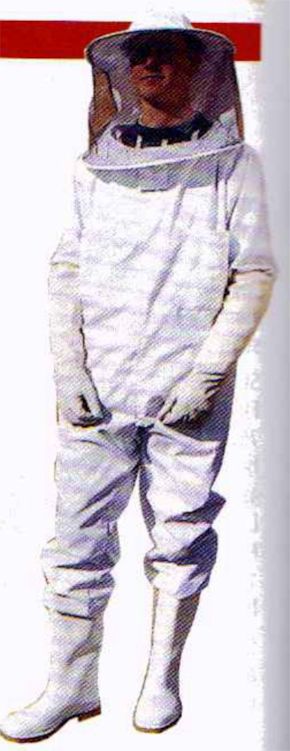 |
 The Hive tool is used to separate glued parts, eg frames, super, etc. The Hive tool is used to separate glued parts, eg frames, super, etc.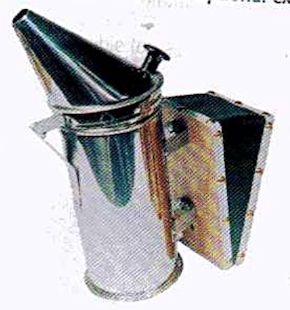
SmokerThis is used to calm the bees. A couple of puffs of smoke at the hive entrance, wait a minute before opening the hive, then use as needed. |
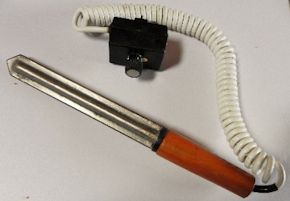 Electric heat knife Electric heat knife
|
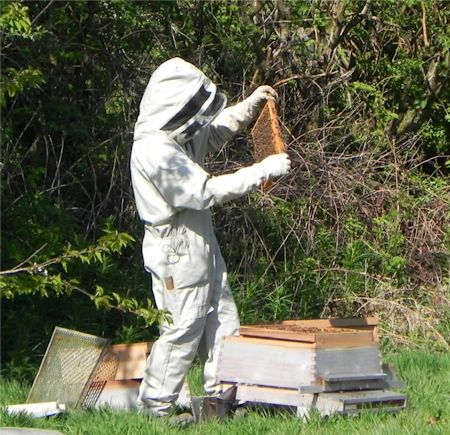 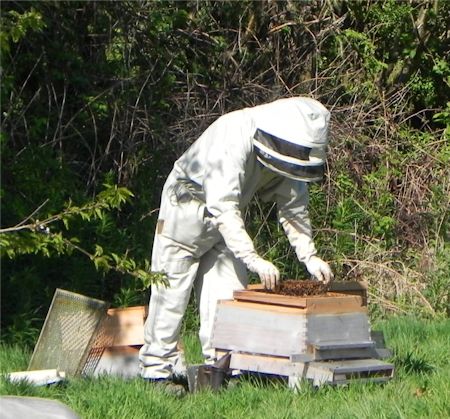 |
An inspection of the hiveTry to inspect the hive once a week weather permitting, between mid May to end of August. The main reason for doing this once a week is to prevent swarming, because the colony could make a Queen and swarm within two weeks. If the hive is re-queened once a year you do not need to inspect so often as the colony is less likely to swarm. Other things to look for while inspecting the hive are:
|
Pests & DiseasesBirds swoop down and catch them in flight and while the bees are collecting nectar & pollen. Wasps rob the hives of honey (to help prevent this reduce the entrance to one or two bee spaces to help the bees defend against them ). Ants raid the hives for honey ( to help this place oils soaked rags around the legs of the hive ) and Mice cause more trouble in the winter months – they will eat lots of honey and cause damage to combs ( Make the entrance to small for mice to get in ). It is normal to find dead bees outside the hive this is usually from old age. |
|
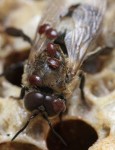 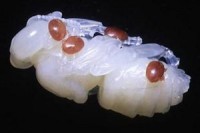 |
Pictures of Varroa mites on honey bee and larva Several products are available to treat this parasiteMost colony losses are caused by starvation, queenlessness, damp, or pesticides If the above reasons are ruled out it could be a disease and Defra would send a Bee inspector to investigate and advise free of charge. |
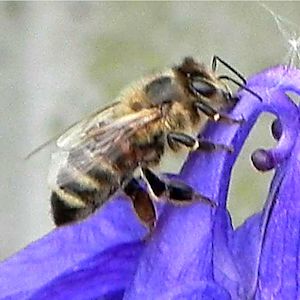
Apis Mellifera Carnica also known as Carniolan. A slender honey bee with a fairly long tongue.
|
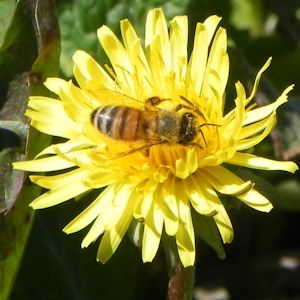
Apis Mellifera Ligustica also known as the Italian honey bee.
|
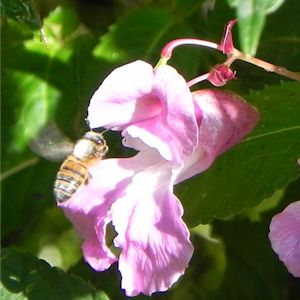
Apis Mellifera Ligustica X Apis Mellifera Carnica Honey Bee.
|
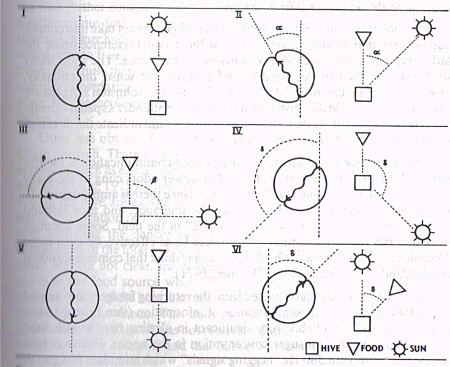 |
Scout bees are sent out by the colony to search for new foods. When they return they perform the wag-tail dance.This tells the other bees the direction and distance to the new food source. The distance the bees travel is according to the food available, so it is therefore best to provide food close to the hive as this will help to prolong their life span |
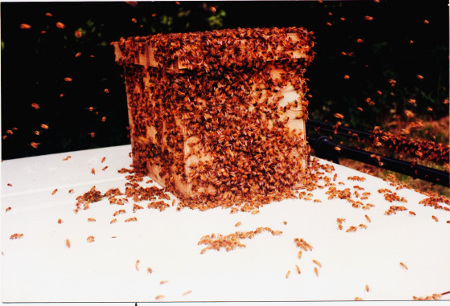
The top Swarm is an Italian strain and the right Swarm is Carniolan Strain. Before the swarm leaves the hive, they fill themselves up with honey. They then usually form a cluster near the hive they have left. They then send out scouts to find a new hive. When they find a new place the scouts return to the cluster and then the whole swarm is airborne within seconds |
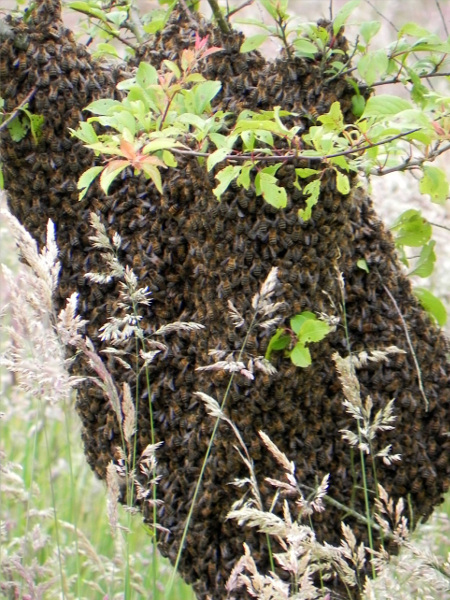 |
A Young Queen Bee returning from her first mating flight she will make two or three mating flights a day over a period of two to four days, the first flight is usually about ten days after emerging she will start laying two or three days.After this, she has to make these flights within four weeks after emerging. Once she starts laying she will only leave the hive if they swarm. If they don’t swarm she will never leave the hive again.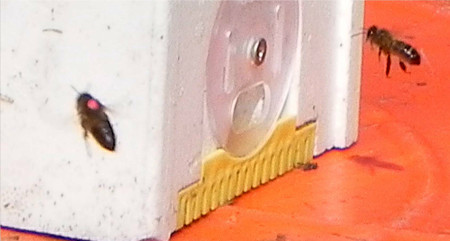 |
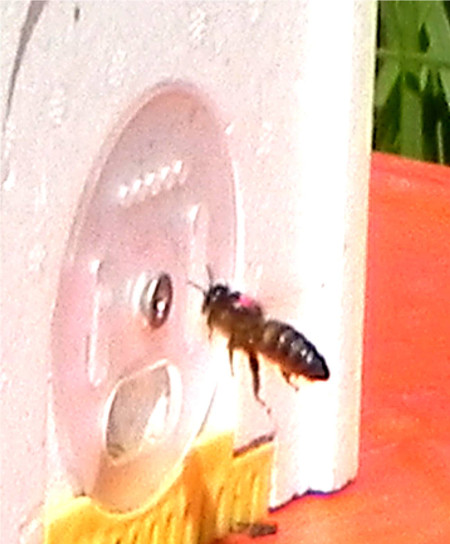 |
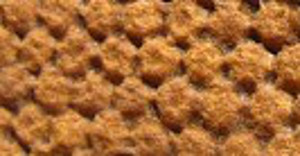 Each frame should contain worker brood of the same age. EG all eggs, Larva or capped.Worker brood should be grouped together slightly domed and cells full of pollen close by.Drone brood are scattered about and more domed Each frame should contain worker brood of the same age. EG all eggs, Larva or capped.Worker brood should be grouped together slightly domed and cells full of pollen close by.Drone brood are scattered about and more domed |
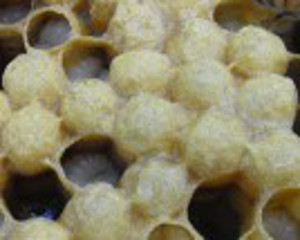 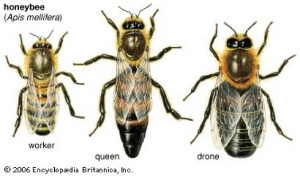 Left is a worker honey bee Left is a worker honey beeMiddle the Queen Right the Drone |
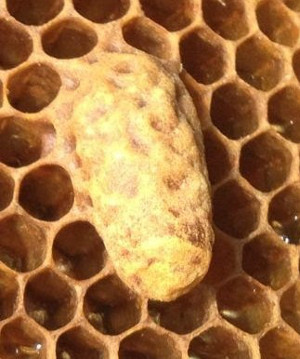 A Queen cell is much larger and built out from the brood or on the bottom of the frame. A Queen cell is much larger and built out from the brood or on the bottom of the frame.There could be 20 or more at one time Remove all to prevent the bees swarming, or kill the old Queen and leave alone. The first Queen to hatch will kill all the others |
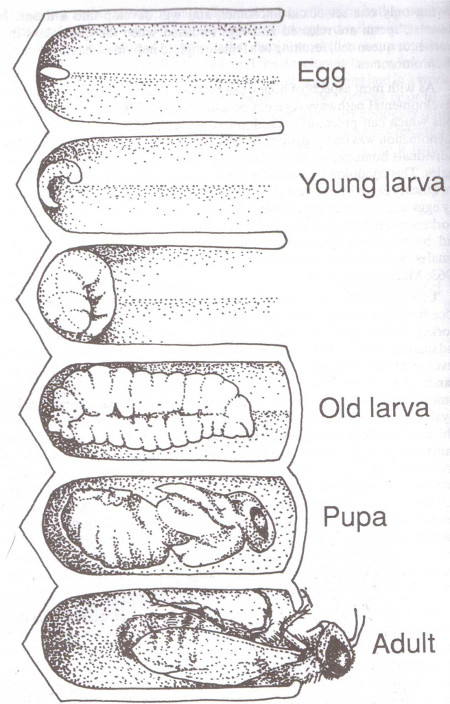 |
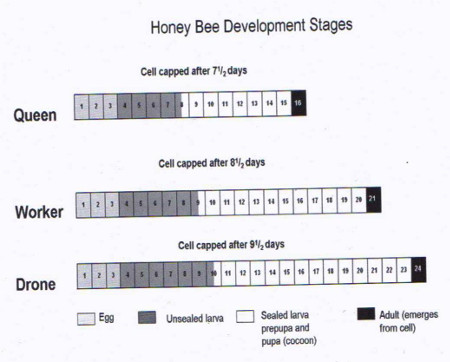 The Queen Larva is fed with Royal Jelly this is made by the worker bees in their Mandibular Glands.The Worker and Drone Larva are fed on Hypo-pharyngeal gland secretions , honey and pollen. The Queen Larva is fed with Royal Jelly this is made by the worker bees in their Mandibular Glands.The Worker and Drone Larva are fed on Hypo-pharyngeal gland secretions , honey and pollen. |
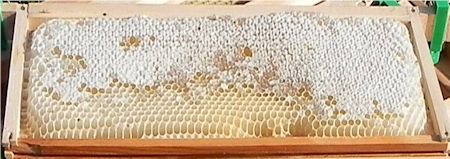 Honey has now been capped in the frames by the bees and is ready Honey has now been capped in the frames by the bees and is readyUse a electric capping knife or a bread knife dipped in boiling water to cut the caps off 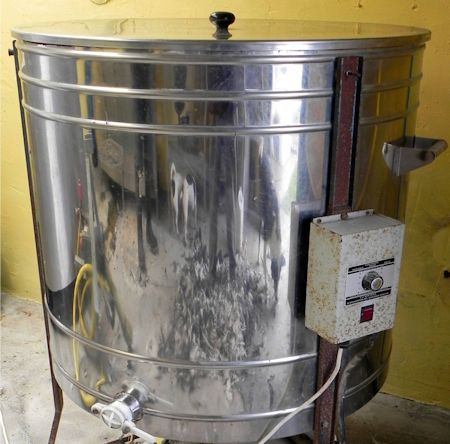 Electric Honey Spinner Electric Honey Spinner |
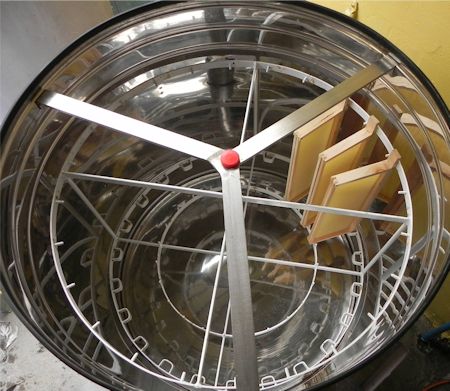 Place the frames in the spinner as you can see in the picture.Tthis one will take up to 24 frames make, sure they are evenly space if less than 24 Place the frames in the spinner as you can see in the picture.Tthis one will take up to 24 frames make, sure they are evenly space if less than 24 |
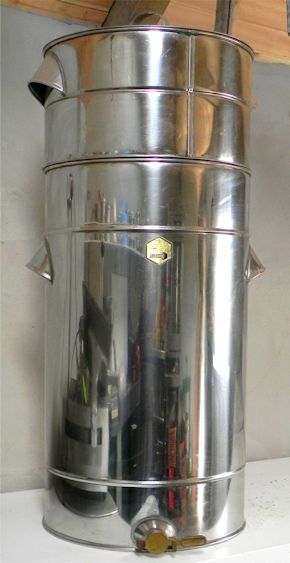 A settling tank A settling tank |
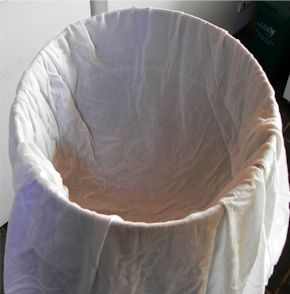 Inside of settling tank Inside of settling tank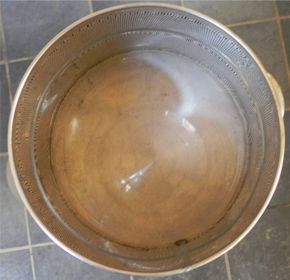 Muslin place inside to strain the honey |
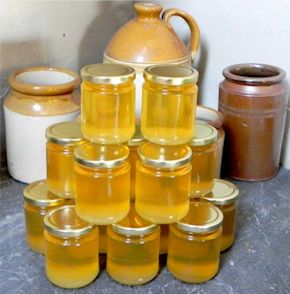 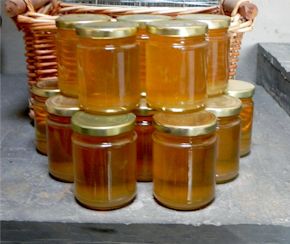 Honey – all ready for labels |


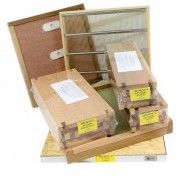 The brood & Super frames are bought in flat pack
The brood & Super frames are bought in flat pack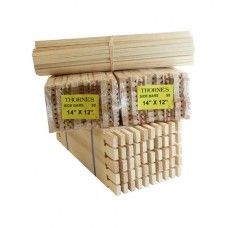
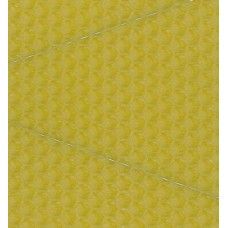
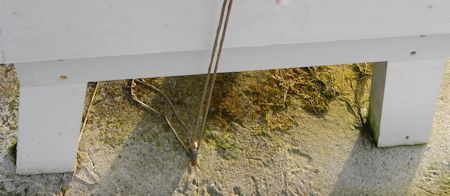
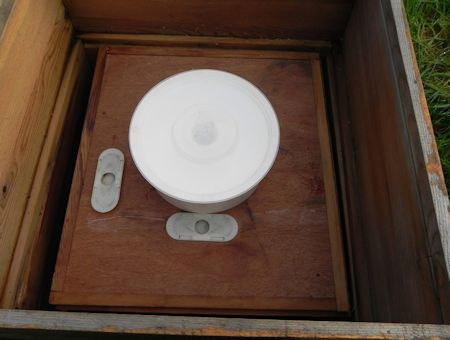 Dissolve 1kg of sugar to 1lt warm water in the Autumn
Dissolve 1kg of sugar to 1lt warm water in the Autumn